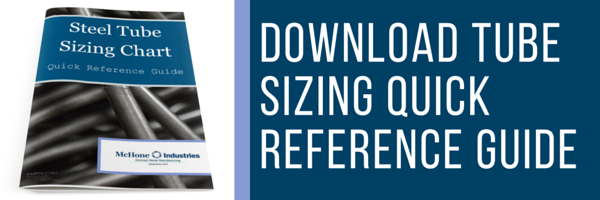 The popular image of lasers seems to be one of an all-powerful machine capable of piercing any metal, plastic, or person. Although such a machine is imaginable, building and running it would cost an amount only the greatest supervillain could afford.
The popular image of lasers seems to be one of an all-powerful machine capable of piercing any metal, plastic, or person. Although such a machine is imaginable, building and running it would cost an amount only the greatest supervillain could afford.
If your interest is in tubular laser cutting of metals and other materials, there are important limitations to laser cutting you should know.
This isn’t to say that laser cutting doesn’t have any advantages -- there’s a reason for its rise to power in recent years. For example, lasers don’t wear out, whereas machining cutters do. In general, laser cutting is more streamlined than traditional machining, so you can expect increased productivity.
It’s really a matter of deciding which applications suit a laser better than machining. If you have a specific material or thickness you’re not willing to deviate from, you should probably check the list below to make sure it’s suited for laser cutting.
Either way, keep reading below for some valuable info:
Is Your Project a Candidate for Tubular Laser Cutting Services?
The range of materials compatible with laser cutting is fairly extensive. It includes metals, wood and plastic. But different applications require different amounts of power, and that’s where the cost factor comes in.
Material Thickness for Laser Cutting
The most significant limit on cutting metal with a fiber-optic laser is the thickness of the metal itself. Thickness actually matters more than material grade.
For example, for mild steel, a thickness of 1” is about as much as a laser can handle. That number may be lower depending on your vendor’s laser cutting. For aluminum, 0.5” is a common thickness limit. For stainless steel, it’s typically 0.625”
It’s important to remember that the thicker the metal, the more power and time are required to make a cut. And more time and more power translate into higher costs for the customer.
Can You Use These Materials for Laser Cutting?
For the purposes of laser cutting, metals fall into a few categories:
Reflective Metals
Most lasers purchased today are fiber-optic rather than CO2 lasers, which had been the standard for years.
When it comes to cutting “highly reflective” metals, CO2 lasers don’t perform particularly well. Reflective metals include:
- Copper
- Brass
- Bronze
- Gold
- Silver
Fiber-optic lasers don’t have this issue. This opens a new range of applications and materials for tubular laser cutting.
Aluminum
In fiber laser cutting, aluminum is not thought of as a reflective metal, although it is highly reflective. That’s why it’s listed separately here.
However, aluminum is quite strong in proportion to its weight. Laser cutting aluminum can add to its value because of the efficiency of production.
Mild Steel and Stainless Steel
Virtually all grades of steel are amenable to laser cutting.
The best stainless steel grades for laser cutting include:
- 303 stainless steel
- 416 stainless steel
- 430F stainless steel
- 420 stainless steel
- 410 stainless steel
Naturally, harder grades -- like 302, 440, and 2205 stainless steel -- will take longer to cut. Also, keep in mind that stainless steel is vulnerable to work hardening.
Other Materials
Technological advances have brought new materials into the laser cutting world. And traditional materials remain fair game. Here are a few examples:
POM
This thermoplastic is ideal for technical parts. It’s tough, waterproof, and solvent-resistant.
Medium-Density Fiberboard (MDF)
MDF is a composite similar to plywood. This product can be cut into a wide variety of shapes using a range of colors.
Plywood
Plywood is common in furniture, buildings, and all kinds of decorative applications. Boring, but effective at times. (Just don’t let it rot or be taken over by insects.)
What You Can’t Laser Cut
Given all the applications of laser cutting, there are some materials that can’t be laser cut -- at least not safely. Here are the suspects:
- Things that catch fire: polycarbonate, HDPE, polystyrene foam, polypropylene foam
- Materials that emit noxious or poisonous fumes: PVC, ABS, fiberglass, coated carbon fiber
This is not an exhaustive list. So hunt around the internet a little more if your desired material isn’t here. Another good resource, of course, is a reputable laser cutting services provider.
Learn More
Clearly, tubular laser cutting is an expanding alternative to other methods. This doesn’t mean that other methods are obsolete. They’re not -- yet.
If your final decision is going to be based on economics, the best way to decide which is to understand the technology and its advantages and disadvantages. Again, if you still need help with that, it may help to contact a metal fabricator well ahead of production. The best ones can be a true hero when it comes to design assistance.


